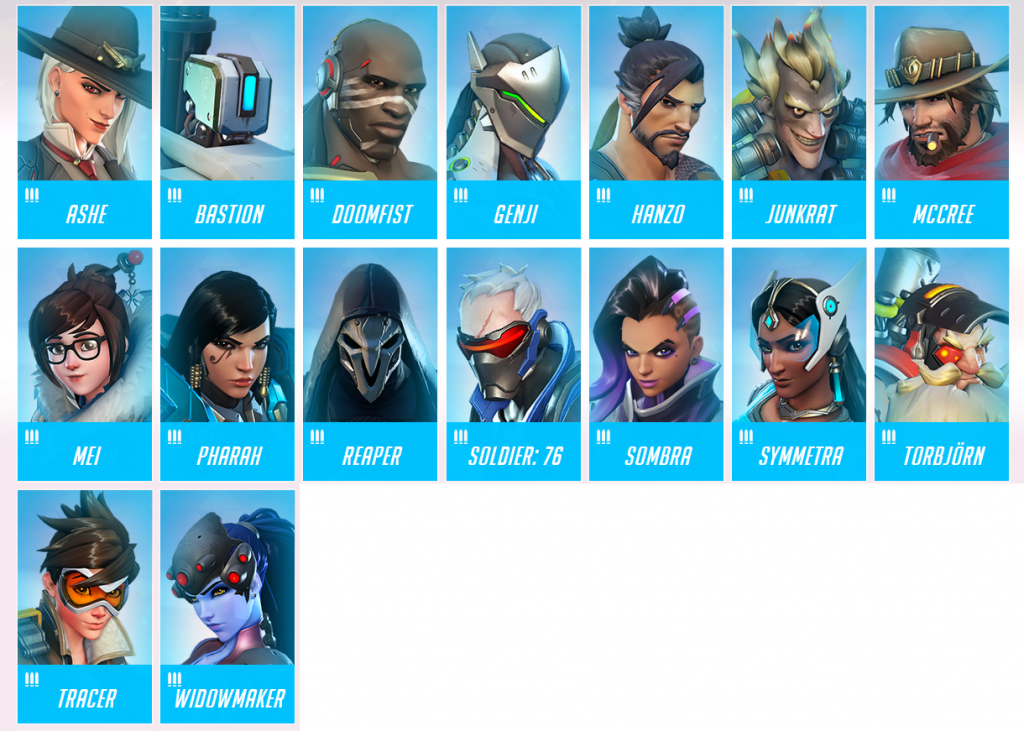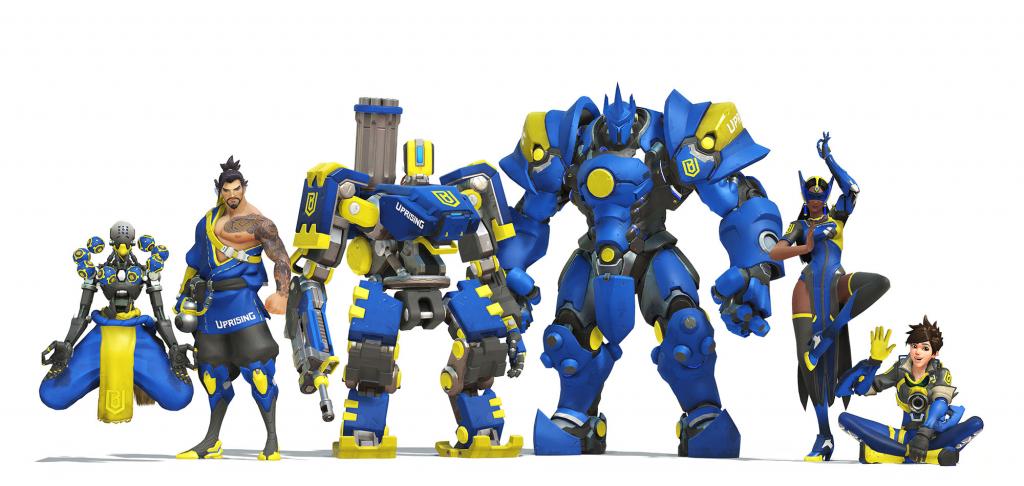It can be a bit overwhelming to get into any new sport, let alone one of the biggest eSport league in the world. In an attempt to get you up to speed, I will be presenting a five part series to introduce everyone to the Overwatch League, the four different game modes, the basics of Overwatch’s heroes, some common terminology, and a look at the Boston Uprising’s roster. In this article, I’ll be looking at Overwatch’s heroes.
Now that we’ve covered game types let’s talk about the different characters that Overwatch League players choose from. Players have to coordinate in order to move the payload or capture a control point, but how do they do it? Teams are playing a sophisticated game of paper-rock-scissors based on the three main categories of the characters they choose. First, DPS (damage-per-second) players are tasked with killing other players. Second, tanks are aiming to stand in the middle of the battlefield, moving/capturing the objective, and disrupting the DPS from doing their job. Lastly, support players try to augment their teammates through their ability to heal or boost players. How these three types of heroes work together is the meat and potatoes of Overwatch.
DPS (Damage-Per-Second)
If you want to be a human highlight real than DPS is for you. These players make the fancy plays, hit incredible shots, and change the tide of a game with a single click. Their mission, 9 times out of 10, is to seek and destroy. They have different ways of doing this (we’ll get into it) – but the DPS heroes are all bloodthirsty killing machines. How Overwatch League teams choose their DPS heroes and their strategy is highly dependent on context. I’ll try to cover some basic universal truths.
DPS are the ones who have to get rid of tanks. That’s because they’re the only ones who produce enough damage to complete that task. Additionally, supports don’t have the strength to take out a tank. They’re too weak. Other tanks are not nearly as effective as wiping out their fellow tanks as a DPS player.
A big problem is that tanks are generally being healed or boosted by some type of support. How can you kill a DVa whose 400 health is constantly being replenished by a Mercy who heals at 50 health/second? Thus, you have the eternal cat-and-mouse of Overwatch. DPS wants to kill tank. Simultaneously, tanks are being helped by support. Then DPS targets support so they can get around to killing the tank. Lastly, supports ask their DPS and tank teammates to defend them. And on and on in a death spiral.

Hitscan vs. Projectile & Close Range vs. Long Range
DPS players generally fit into two different categories; hitscan or projectile. Hitscan means players have a gun – ie you click to shoot and assuming your cursor is over the other player, they get hit. Someone like Widowmaker with her sniper rifle, or Bastion with his turret is a good example of this. A projectile is, well, a projectile. Projectile DPS have to do a degree of estimating where their targets are going to be in order to land their shot. This includes Junkrat shooting his grenades or Pharah launching her rockets.
Another distinction with DPS are between those who play close or long range. Some heroes, like Reaper and Doomfist, have to be up close to enemies in order to maximize their utility to the team. Others, like Widowmaker and Ashe, can play much further out. Knowing who you are, how to position yourself, and maximizing your abilities is what makes a star DPS player.
Tank
For those who want to be the big boys that push everybody around, the tank may be the role for you. It’s confusing to understand what a tank is and what they do if you’re new to Overwatch. They don’t fit into the kill/heal dichotomy. Tanks are somewhere in the middle and off on their own. There are a few common attributes of tank players. They are big. One could say phaaaat. As a result, they are big targets. Teams often will focus all their efforts on wiping tanks out.
Those who play as tanks aren’t necessarily looking to get kills and aren’t even particularly good at it. Granted, they are more than capable especially compared to a support. But that’s because tanks aren’t looked at for the damage they deal. Oftentimes they provide shields for your team by blocking/absorbing the enemy team’s shots. Most also have ultimate abilities that make the enemy team run away. This is helpful when you’re trying to control a specific area on the map.

Tanks play a unique and non-trivial role. Oftentimes those playing tank are shotcallers, or people who direct the whole team. They’re the ones that direct attacks, coordinate positioning, and order retreats. Tanks are often the first on the point or payload. Additionally, tanks coordinate in tandem with other players to use their ultimates, requiring a strong level of communication.
Support
Overwatch players in the Support role are the unsung heroes of their teams. Rarely shown on the broadcast, supports’ stats don’t represent well what they do, and they’re usually the center of meta-controversies. Like a lineman or a mid-game reliever, supports don’t get any respect. But these are the backbone of any successful Overwatch League team.
The supports use their abilities to heal and buff their teammates. Whether it is Lucio boosting nearby teammate’s speed or Brigitte increasing armor, their help can tip the scale in a team fight. Oftentimes support players can also target enemy players with nerfs – Ana‘s sleep dart and Zenyatta‘s discord orb are examples of these. Those powers help a support’s teammates focus on a target to wipe out early on in a team fight.

Support players aren’t known for their offensive capabilities, generally. Though there is a whole “Battle Mercy” meme out there, supports generally play in the back line and work to help their team. It is the tank and DPS’ job to protect them from attack. Interestingly, JJonak, the league’s first MVP, is a Zenyatta main.
Closing thoughts
With only a basic understanding of what the three main groups of heroes are you are more than capable of understanding a game of Overwatch. The cat-and-mouse, paper-rock-scissor dynamic holds true in nearly all circumstances. Learning the minutia of each individual hero will certainly get you to a degree of mastery, but it isn’t required. Knowing that you have the DPS, tank, and support roles is more than enough to enjoy watching a game of Overwatch!
For all the latest on the Overwatch League and Boston Uprising, please follow me on Twitter #BostonUp
